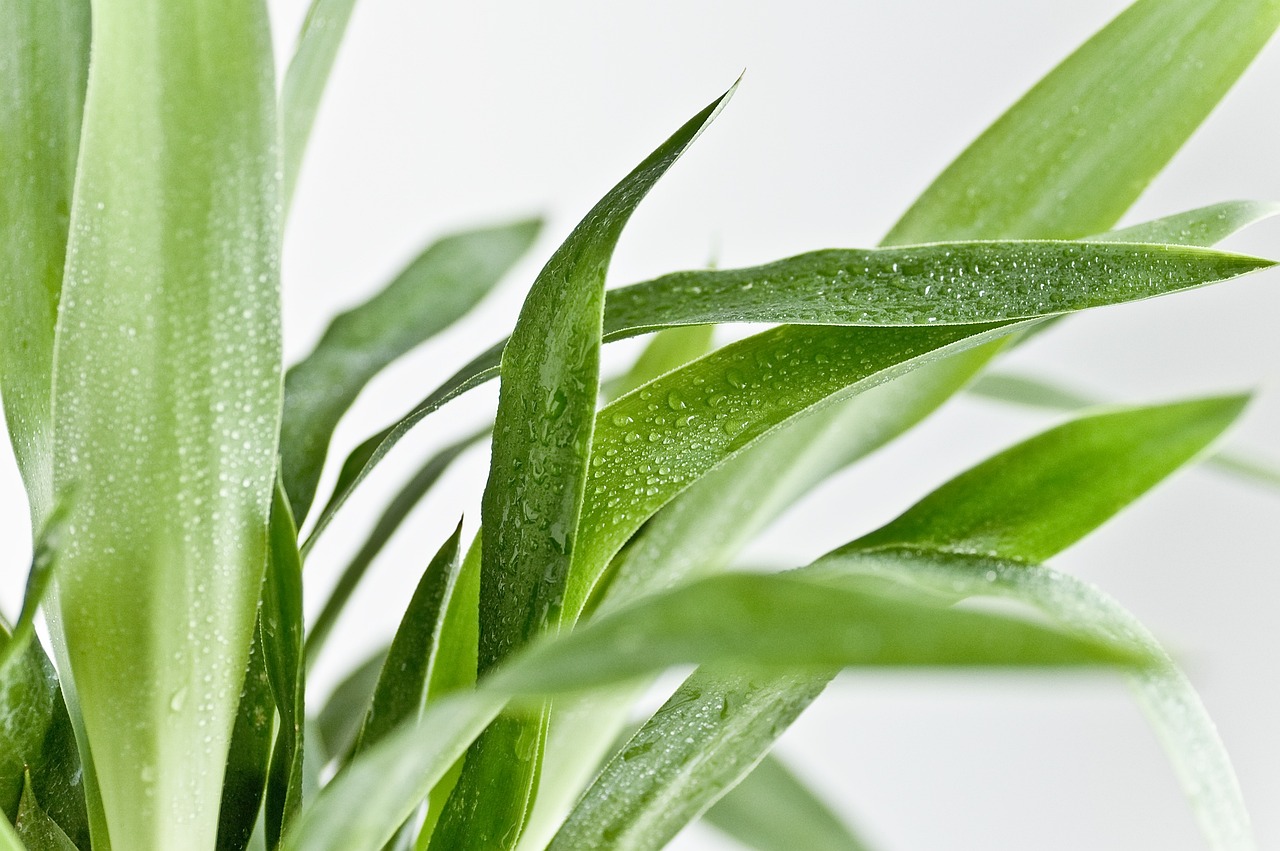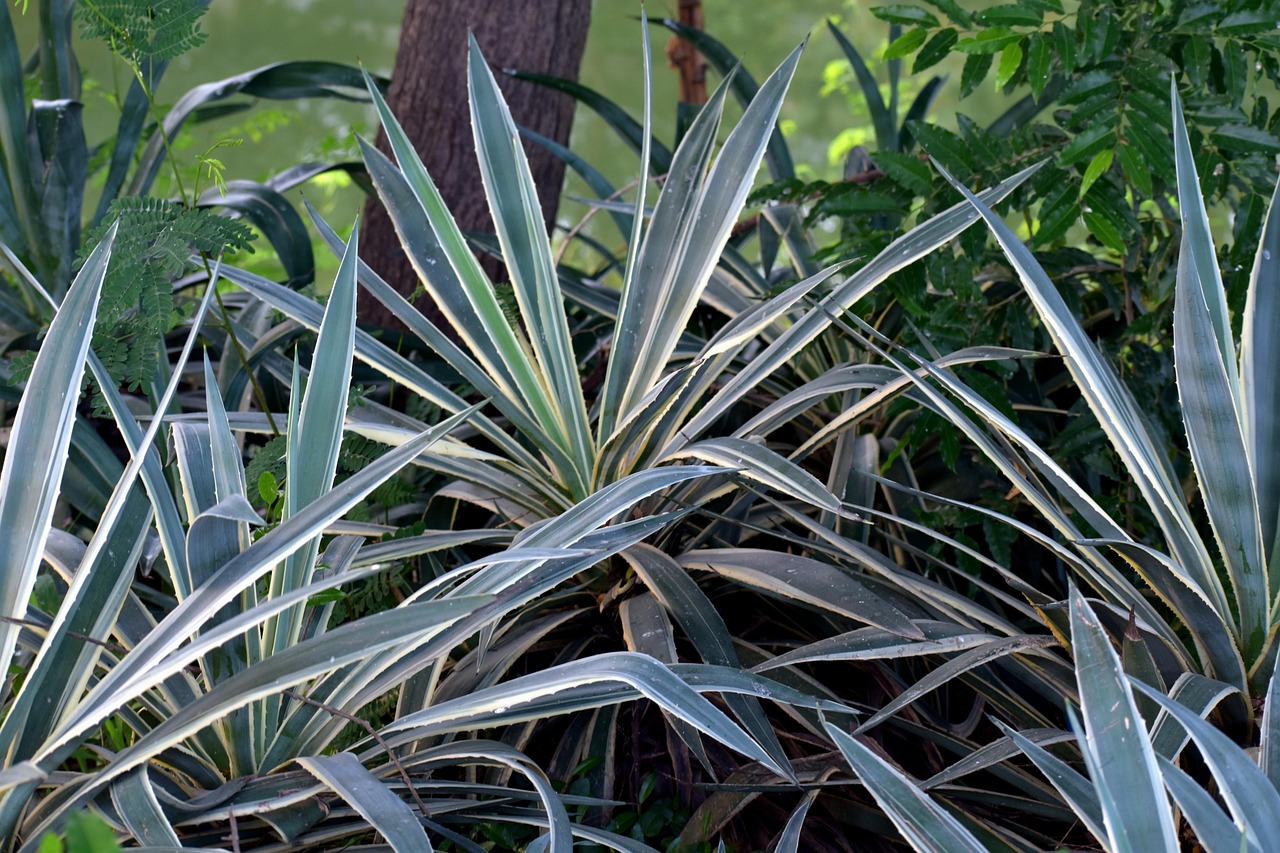The yucca plant is more than just a striking desert dweller; it is a symbol of resilience and adaptability. Found in arid regions across North America, yuccas have evolved to thrive in some of the harshest environments on the planet. This article explores the various aspects of the yucca plant, from its unique characteristics to its numerous uses in landscaping and traditional medicine.
Belonging to the Asparagaceae family, yuccas are often recognized for their sword-like leaves and tall flower spikes that can reach impressive heights. These plants are not only visually appealing but also play a crucial role in their ecosystems. They provide shelter and food for various species, including pollinators like moths and butterflies.

Yuccas are primarily found in regions with low rainfall and poor soil quality. Their ability to store water in their thick stems and leaves makes them adaptable to extreme conditions. Many species of yucca can survive long periods of drought, showcasing their remarkable survival strategies.
| Species | Common Name | Height | Native Region |
|---|---|---|---|
| Yucca brevifolia | Joshua Tree | Up to 15 feet | Southwestern U.S. |
| Yucca filamentosa | Adam’s Needle | Up to 4 feet | Southeastern U.S. |
| Yucca gloriosa | Spanish Dagger | Up to 10 feet | Southeastern U.S. & Caribbean |
| Yucca schidigera | Mohave Yucca | Up to 10 feet | Deserts of California & Nevada |
The yucca plant is not just an aesthetic addition to gardens; it has practical uses as well. For centuries, indigenous peoples have utilized various parts of the yucca for food, fiber, and medicinal purposes. The roots are rich in saponins, which have both anti-inflammatory and antimicrobial properties. Today, some herbalists still use yucca extracts for various health benefits.
Characteristics of Yucca Plants
Yuccas are characterized by their long, narrow leaves that grow in a rosette formation at the base. The leaves can vary significantly in size and shape depending on the species. Some are smooth, while others have sharp edges or filament-like strands that give them a unique texture.
The flowers of yucca plants are another highlight. They typically bloom in late spring or early summer, producing clusters of creamy white or greenish flowers that hang down from tall stalks. These flowers are not only beautiful but also attract pollinators, which are essential for the plant’s reproduction.
In addition to their stunning appearance, yuccas are known for their durability. They can thrive in poor soil conditions and require minimal maintenance once established. This makes them a popular choice for xeriscaping, a landscaping method that reduces or eliminates the need for irrigation.
Furthermore, yuccas possess a unique symbiotic relationship with certain moths, specifically the Yucca Moth. The moths lay their eggs within the flowers of the plant, and as a result, they pollinate the flowers while providing a safe environment for their larvae. This relationship highlights the interconnectedness of ecosystems.
With their striking appearance and resilience, yucca plants continue to captivate gardeners and nature lovers alike. Their ability to adapt to challenging environments makes them a fascinating subject of study and appreciation.
Growing and Caring for Yucca Plants
If you are considering adding a yucca plant to your garden or landscape, understanding how to grow and care for these remarkable plants is essential. Yuccas are generally low-maintenance, but they do require some attention to ensure they thrive in their environment. Below are key guidelines for successful yucca cultivation.
Soil Requirements
Yuccas are well-known for their ability to adapt to poor soil conditions. However, providing them with the right type of soil can enhance their growth. Here are some soil tips:
- Well-draining soil: Ensure that the soil has good drainage to prevent root rot. Sandy or rocky soils are ideal.
- pH level: Yuccas prefer slightly alkaline to neutral pH levels, usually between 6.0 and 8.0.
- Avoid compacted soil: Soil should be loose and aerated to allow for healthy root development.
Watering Guidelines
One of the most crucial aspects of yucca care is proper watering. While yuccas are drought-tolerant, they still need water during their initial establishment phase:
- Initial watering: Water the plant thoroughly when first planted to help establish roots.
- Drought tolerance: Once established, yuccas should only be watered during prolonged dry spells.
- Signs of overwatering: Yellowing leaves or mushy stems indicate overwatering; adjust your watering schedule accordingly.
Light Requirements
Yuccas thrive in bright, indirect sunlight. Here are some light considerations:
- Full sun exposure: Yuccas prefer full sun but can tolerate partial shade.
- Indoor placement: If growing indoors, place your yucca near a south-facing window for optimal light.
- Avoid low light: Insufficient light can lead to leggy growth and a weak structure.
Pest and Disease Management
While yuccas are generally hardy, they can be susceptible to certain pests and diseases. Here are common issues and how to address them:
- Mealybugs: These pests often appear as cotton-like masses on the leaves. They can be removed with a cotton swab dipped in rubbing alcohol.
- Spider mites: These tiny pests thrive in dry conditions. Increasing humidity or using insecticidal soap can help control their population.
- Root rot: Caused by excessive moisture, root rot can be prevented by ensuring proper drainage and avoiding overwatering.
Propagation Techniques
Yuccas can be propagated through various methods, making it easy to expand your collection. Common propagation techniques include:
- Offsets: Many yucca species produce offsets or “pups” at their base, which can be removed and replanted.
- Leaf cuttings: Take healthy leaves, allow them to callous for a few days, and then plant them in well-draining soil.
- Seed propagation: Although it is a slower process, seeds can be sown after soaking them in water for 24 hours.
By following these guidelines, you can foster a thriving yucca plant that not only enhances your garden but also contributes to the local ecosystem. Whether you choose to grow them indoors or outdoors, these plants will undoubtedly make a striking addition to any space.

Uses of Yucca Plants

The yucca plant is not only visually appealing but also versatile in its uses. From landscaping to traditional medicine, yuccas offer a range of benefits that extend beyond their ornamental value. This section explores the various applications of yucca plants.
Ornamental Uses
Yuccas are popular choices for gardens and landscapes due to their dramatic appearance. Here are some key ornamental uses:
- Architectural focal points: The tall flower spikes and striking rosette shape can serve as a stunning centerpiece in garden designs.
- Xeriscaping: Yuccas are ideal for xeriscaping, which promotes water conservation through drought-resistant plants.
- Container gardening: Their unique form makes them suitable for container gardens, adding a touch of the exotic to patios and balconies.
Culinary Uses
While many may not consider yucca for culinary purposes, certain parts of the plant have been used in traditional dishes:
- Roots: The roots of some yucca species, such as cassava (Manihot esculenta), are edible and used to make flour, tapioca, and other food products.
- Flower stalks: The flower stalks can be cooked and eaten in salads or other dishes, providing a unique flavor and texture.
- Young leaves: In some cultures, young leaves can be harvested and consumed, though they should be prepared properly to avoid bitterness.
Medicinal Properties
The yucca plant has been traditionally used in herbal medicine for centuries. Its various parts contain compounds that have potential health benefits:
- Saponins: Found in the root, saponins have anti-inflammatory and antioxidant properties that may help alleviate joint pain and inflammation.
- Antimicrobial effects: Some studies suggest that yucca extracts have antimicrobial properties, which may aid in fighting infections.
- Digestive health: Yucca is sometimes used as a natural remedy for digestive issues due to its high fiber content.
Environmental Benefits
Beyond their aesthetic appeal, yuccas offer several environmental advantages:
- Erosion control: The extensive root systems of yucca plants help prevent soil erosion in arid environments.
- Wildlife habitat: Yuccas provide shelter and food for various wildlife species, including birds and insects, contributing to biodiversity.
- Carbon sequestration: Like all plants, yuccas absorb carbon dioxide, helping to mitigate the effects of climate change.
Cultural Significance
Yuccas hold cultural importance in various indigenous communities. They are often used in rituals and traditional practices:
- Crafts: The fibers from yucca leaves can be woven into baskets, mats, and ropes, showcasing the plant’s utility.
- Symbolism: In some cultures, the yucca is seen as a symbol of strength and resilience, often associated with survival in harsh conditions.
- Medicinal traditions: Many Native American tribes have utilized yucca for medicinal purposes, passing down knowledge through generations.
The versatility of the yucca plant makes it a valuable asset in various fields. Its striking appearance, combined with practical uses in cuisine, medicine, and the environment, ensures that yuccas will remain significant for gardeners and communities alike.
Final Thoughts

The yucca plant stands out not only for its striking beauty but also for its remarkable adaptability and utility. As a resilient inhabitant of desert landscapes, it embodies the essence of survival and resourcefulness in challenging environments. Its unique characteristics, from the architectural elegance of its leaves to the stunning display of its flowers, make it a sought-after addition to gardens and landscapes.
In terms of gardening, yuccas are an excellent choice for those looking to create low-maintenance yet visually appealing spaces. Their ability to thrive in poor soil conditions and require minimal water makes them ideal for xeriscaping, especially in regions prone to drought. This quality not only benefits individual gardeners but also contributes positively to local ecosystems by promoting biodiversity and reducing water consumption.
Beyond their ornamental value, yuccas offer a variety of practical uses. From culinary applications to traditional medicine, the plant has been utilized by various cultures throughout history. The roots and flowers provide nourishment, while the medicinal properties of yucca have been harnessed for centuries to address health issues. This multifunctionality exemplifies how plants can enrich our lives in multiple ways.
The cultural significance of yuccas further underscores their importance. Various indigenous communities have woven the plant into their traditions, utilizing its fibers for crafts and recognizing its symbolic meaning as a representation of strength and resilience. Such cultural ties serve as a reminder of the interconnectedness between nature and human heritage, highlighting the importance of preserving these plants for future generations.
Looking Ahead
As we move into an era where sustainable practices are increasingly vital, the yucca plant presents an excellent opportunity for education and conservation. By understanding and promoting the uses and benefits of yuccas, we can advocate for their cultivation and preservation. This not only supports biodiversity but also encourages a deeper appreciation for the natural world.
Whether you are a seasoned gardener or a novice, incorporating yucca plants into your landscape can be rewarding. Their striking appearance, low maintenance needs, and various uses make them an excellent choice for enhancing both aesthetics and functionality in your garden. Additionally, as climate change poses challenges to ecosystems worldwide, embracing drought-resistant plants like yuccas can play a crucial role in sustainable gardening practices.
In summary, the yucca plant is far more than just a dramatic desert dweller; it is a valuable asset in our gardens, health, and culture. By recognizing its significance and potential, we can ensure that this remarkable plant continues to thrive and inspire in our landscapes and communities. Embrace the yucca and discover its power in your own garden!
